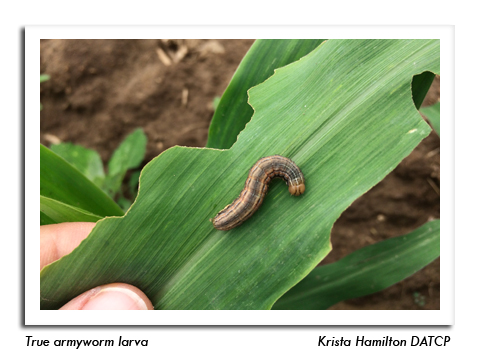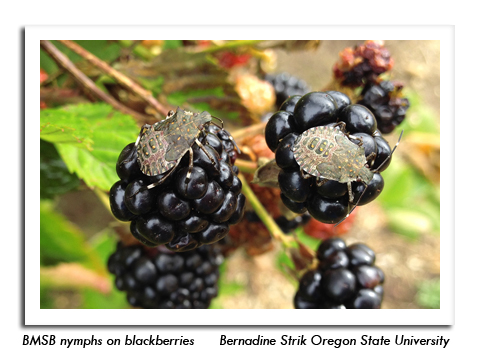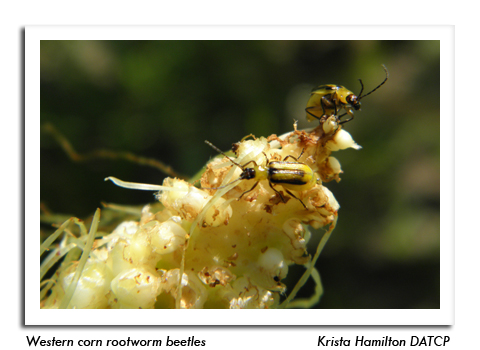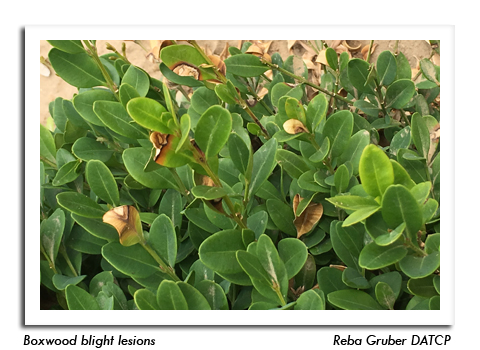Looking Ahead
Volume 63 Number 18 Date 11/15/2018
PEST HIGHLIGHTS OF 2018
EUROPEAN CORN BORER - The fall European corn borer survey found the lowest population in 77 years, 0.01 borer per plant. The previous record-low state average was 0.02 borer per plant in 2015. Larvae were absent from 90% of the 229 sampled fields in September and October, while only 10% showed signs of infestation. USDA statistics indicate Wisconsin's Bt corn use rate reached an all-time high of 75% of planted acres in 2018, though the ECB population has remained consistently very low (<0.11 borer per plant) for more than a decade. Continued low ECB levels should be expected in 2019.
TRUE ARMYWORM - Significant spring moth flights and delayed grassy weed control contributed to severe outbreaks of second-generation armyworms in July. Infestations were the most widespread in at least eight years and considerable corn and small grains acreage was treated to bring the caterpillars under control. Problems were reported most often from north-central and western Wisconsin, with isolated fields statewide experiencing varying levels of damage.
BASIL DOWNY MILDEW - Although official detections were confirmed in only two counties in 2018 (Dodge and La Crosse), anecdotal reports suggest the incidence of this fungal-like disease was much higher. First identified in Wisconsin in 2010, basil downy mildew (BDM) causes abrupt rapid defoliation of entire basil plants. Fungicidal control of BDM is discouraged, thus growers must rely on frequent monitoring followed by immediate harvest upon first detection of disease symptoms.
BROWN MARMORATED STINK BUG - Range expansion continued into western Wisconsin this year, with new specimen records established in Eau Claire, Jackson, La Crosse, Marquette, Richland, and Trempealeau counties. The highest densities of this invasive pest are now concentrated in the Madison, Green Bay, Janesville, and Milwaukee-Waukesha areas. The Wisconsin BMSB distribution map currently includes 27 counties, primarily in the southern and eastern regions.
CORN ROOTWORM - Beetle pressure remained historically low for the second consecutive season. DATCP's August survey of adult rootworms documented a state average of 0.2 beetle per plant, the same average as in 2017 and tying the lowest count since 1971. Contributing factors to the low counts include continued high use of Bt-rootworm corn and reduced egg populations entering the 2018 season.
BOXWOOD BLIGHT - A new state record was established on July 19 with the first Wisconsin detection of boxwood blight, a destructive fungal disease that causes brown foliar lesions and leaf drop. The infected shrubs were found in a Kenosha County nursery during a routine inspection. Customers that may have received infected stock were notified by the nursery and no additional cases of the disease were identified outside of Kenosha County. Boxwood blight is a significant concern for the ornamental horticulture industry. Residents who suspect boxwood blight should contact their local UW-Extension office.
-- Krista Hamilton, DATCP Entomologist













